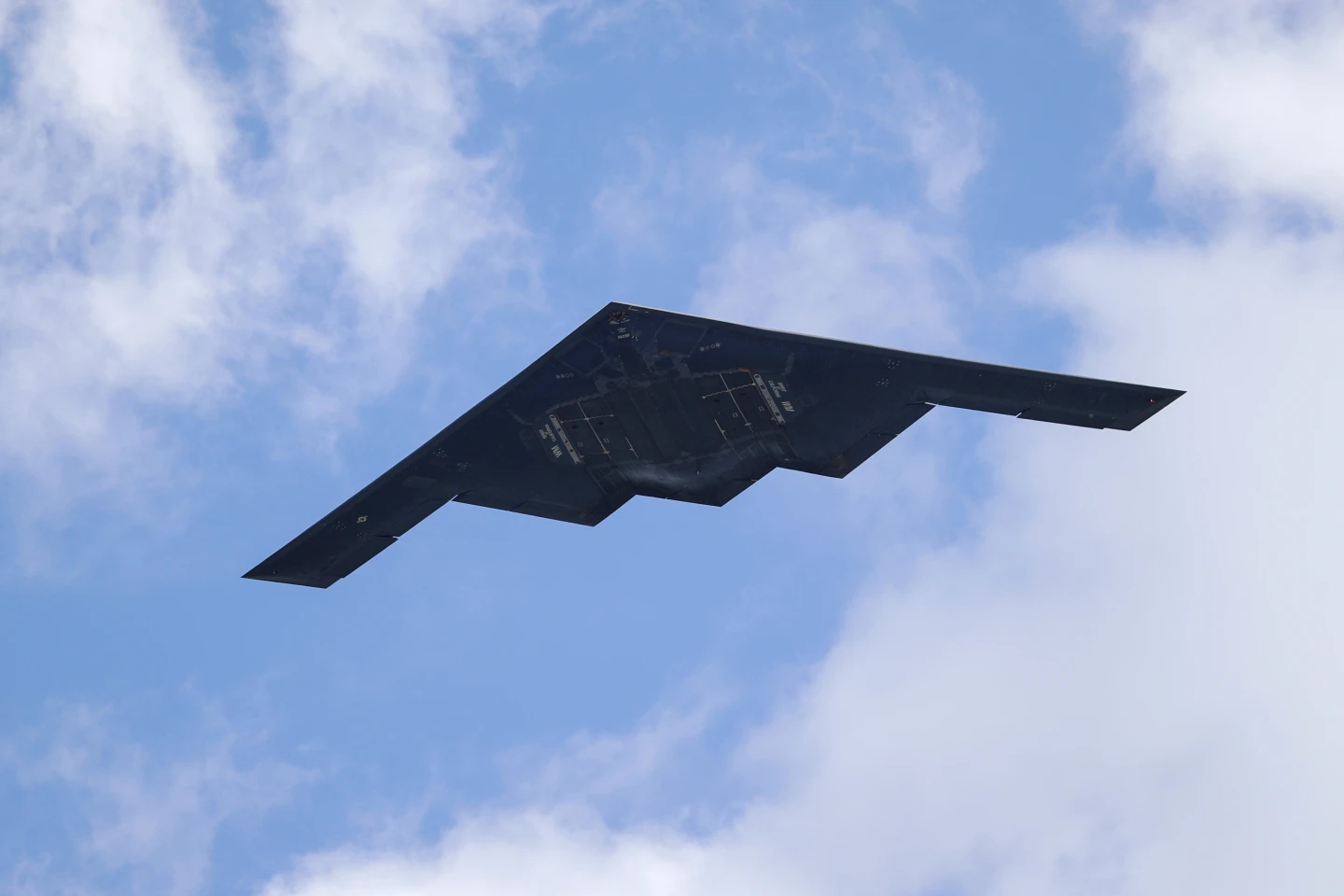The world is still reacting to US President Donald Trump’s decision to enter the escalating conflict between Iran and Israel on Saturday after casually returning to the White House from his golf club in New Jersey. Meanwhile, Iran’s nuclear sites are still reeling from the aftereffects of US’s bunker buster bombs.
Nicknamed B-2, multiple of these US Air Force bombers were spotted heading west from the state of Missouri, where some flight trackers speculated that the destination of the aircraft is Guam. Across the Pacific, Guam is a US territory which houses several military installations. According to a report by the New York Times, The B-2 flights were initially tracked on social media before 1am Eastern time (5am GMT) on Saturday.
Air traffic control communications indicated that several B-2 aircraft — the planes that could be equipped to carry the 30,000-pound (13,600 kilogram) bunker-buster bombs- took off from Whiteman Air Force Base in Missouri. The bombers appeared to be accompanied by refueling tankers for portions of the journey, the flight tracking data showed.
The strategic long-range heavy bomber has a range of about 7,000 miles (11,000 kilometers) without refueling and 11,500 miles (18,500 kilometers) with one refueling, and can reach any point in the world within hours, according to producer Northrop Grumman.
“Bunker buster” is a broad term used to describe bombs that are designed to penetrate deep below the surface before exploding. In this case, it refers to the latest GBU-57 A/B Massive Ordnance Penetrator bomb in the American arsenal. The precision-guided bomb is designed to attack deeply buried and hardened bunkers and tunnels, according to the US Air Force, says AP.
The attack used bunker-buster bombs on Iran’s Fordo nuclear fuel enrichment plant that is built deep into a mountain, a US official said. Fordo is Iran’s second nuclear enrichment facility after Natanz, its main facility, which already has been targeted by Israeli airstrikes. Including Fordo and Natanz, US bombs targeted a third nuclear facility in Iran, Isfahan.
“We have completed our very successful attack on the three Nuclear sites in Iran, including Fordow, Natanz, and Esfahan,” Trump said in a post on social media. “All planes are now outside of Iran air space. A full payload of BOMBS was dropped on the primary site, Fordow. All planes are safely on their way home.”
Trump’s decision for direct US military intervention comes after his administration made an unsuccessful two-month push, including with high-level, direct negotiations with the Iranians, aimed at persuading Tehran to curb its nuclear program.


